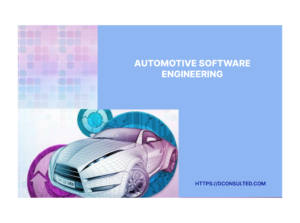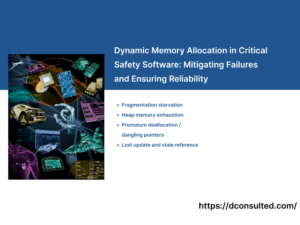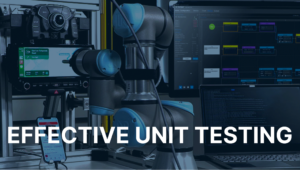
Empowering Your People Isn’t Enough | DConsulted
Learn why empowering employees alone doesn’t guarantee success. Discover how strategic alignment and leadership support drive real results.


In today’s rapidly evolving automotive industry, where innovation and technology intertwine, ensuring that developed systems meet the highest safety and quality standards is paramount. Automotive SPICE (Software Process Improvement and Capability dEtermination) and ISO 26262 are frameworks designed to evaluate and enhance software development processes within the automotive sector.
In this blog post, we will focus on ASPICE Section Sys5, which specifically addresses System Qualification Testing. Organizations can deliver safe, high-quality, and innovative automotive systems that meet and exceed industry standards by understanding the significance of Sys5 and implementing effective practices.
ASPICE is a comprehensive framework that evaluates and improves software development processes in the automotive industry. Within ASPICE, Section Sys5 plays a crucial role in ensuring system qualification. The primary objective of Sys5 is to validate that the developed systems comply with required standards, safety regulations, and quality benchmarks. This section defines the processes and activities that organizations need to undertake to achieve system qualification.
System Qualification Testing is a vital step in the development life cycle of automotive systems. It serves multiple purposes, including validating system compliance with specified requirements, identifying potential issues, and mitigating risks before deployment.
Organizations can ensure the safety, reliability, and quality of their end products by conducting thorough qualification testing. This is especially critical as vehicles become increasingly complex, incorporating advancements such as autonomous driving capabilities.
To excel in ASPICE Section Sys5 and achieve system development excellence, organizations should follow a road map that encompasses the following key steps:
1. Defining Clear Objectives:
It is essential to establish clear and measurable objectives before embarking on the System Qualification Testing journey. Identifying specific testing goals provides a solid foundation for the entire process and ensures that testing efforts align with the desired outcomes.
2. Comprehensive Test Planning:
Developing a detailed test plan is a crucial aspect of ASPICE Section Sys5. The plan should encompass all relevant testing activities, methods, tools, resources, and schedules. Organizations can optimize the testing process, maximize efficiency, and minimize delays by creating a well-structured test plan.
3. Requirements Traceability Matrix (RTM):
4. Selection of Appropriate Testing Methods:
5. Risk-Based Testing:
6. Collaborative Cross-Functional Testing:
7. Test Execution and Evaluation:
2. Tesla Autopilot Accidents
As senior leaders in the automotive industry, we recognize that mastering ASPICE Section Sys5 is crucial for achieving system development excellence. By understanding the significance of System Qualification Testing, planning effectively, and continually improving, organizations can deliver safe, high-quality, and innovative automotive systems that meet and exceed industry standards.
Embracing the principles outlined in ASPICE and ISO 26262 fosters a culture of continuous improvement, enabling organizations to stay competitive in a rapidly evolving automotive landscape. DConsulted can help you navigate the complexities of ASPICE Section Sys5 and guide you toward becoming a leader in system engineering for the automotive sector. Feel free to reach out for further discussions or assistance in your journey toward excellence in system development.
Other Articles

Learn why empowering employees alone doesn’t guarantee success. Discover how strategic alignment and leadership support drive real results.

Generative AI tools like ChatGPT are revolutionizing software engineering by converting UML diagrams into accurate, structured code. Learn more about it here.

AI-powered requirement review tools simplify engineering verification, ensuring accuracy, efficiency, and compliance with INCOSE guidelines. Learn more about it here.

Managing and optimizing thread overhead is important for safety-critical and embedded systems. Learn more about the C++ multithread common myths here.

Managing and optimizing thread overhead is important for safety-critical and embedded systems. Learn more about the C++ multithread common myths here.

Discover the critical role of effective interface management in complex systems. Learn how centralized tools, AI-powered solutions, and well-defined processes can prevent errors, enhance collaboration, and ensure safety in industries like automotive and aerospace.

The system requirements analysis process under ASPICE and ISO26262 frameworks shapes automotive system architecture design for enhanced safety, reliability, and compliance. Learn more about it here.

Compliance with ASPICE and ISO26262 standards provides a significant impact on automotive software development. Learn more about it here.

AI technologies like ChatGPT-4 are revolutionizing requirements engineering by improving accuracy, consistency, and efficiency. Learn about the role of AI in refining, validating, and managing project requirements here.

Model-Based Systems Engineering (MBSE) offers a robust framework to streamline the entire engineering process, from design to validation. Learn more about it here.

Data-Oriented Design (DOD) can revolutionize automotive software development by enhancing performance, reducing costs, and minimizing hardware requirements. Learn more about it here.

Explore the evolution of functional safety, its growing importance in industries like automotive, and the critical role of Fault Tolerant Time Interval (FTTI) in ensuring system reliability. Learn how FTTI, along with Malfunctioning Behavior Manifestation Time (MBMT) and Hazard Manifestation Time (HMT), contributes to robust safety designs, preventing hazards in safety-related systems such as ADAS and autonomous vehicles. Discover the impact of ISO 26262 standards on the development of effective fault detection and reaction mechanisms in automotive safety.

While ISO 26262 primarily addresses functional safety, SOTIF extends the scope to focus on potential hazards arising from system behaviour, even when the system functions as intended. Learn more about it here.

Discover the risks of reinterpret_cast in safety-critical software and explore safe alternatives like polymorphism and templates for robust, efficient code.

In a rapidly evolving technological landscape, the demand for systems that can not only withstand errors but also adapt to them is paramount. This article delves into the world of Fault-Tolerant (FT) systems, emphasizing their significance in maintaining the functionality and safety of critical operations across various sectors. It explores the latest advancements in FT technology, underscoring the importance of resilience and adaptability in ensuring uninterrupted service and safeguarding against potential failures.

In a rapidly evolving technological landscape, the demand for systems that can not only withstand errors but also adapt to them is paramount. This article delves into the world of Fault-Tolerant (FT) systems, emphasizing their significance in maintaining the functionality and safety of critical operations across various sectors. It explores the latest advancements in FT technology, underscoring the importance of resilience and adaptability in ensuring uninterrupted service and safeguarding against potential failures.

Discover the transformative impact of Software-Defined Networking (SDN) and Multicast Addressing on automotive embedded systems. Explore how these technologies enhance communication efficiency, safety, and performance in the automotive industry, leading to cost-effective, scalable, and eco-friendly solutions. Dive into the technical advantages and practical applications for modern vehicles and infrastructure.

Discover how ChatGPT revolutionizes engineering with AI, accelerating learning, enhancing safety, and boosting productivity.

Defect Escape Reduction Rate and feedback loop elevate testing. Learn more about them here.

Conducting software FMEA, FTA, and compliance with ISO 26262 helps developers create software that meets stringent safety requirements. Learn more about it here.

Explore the challenges of dynamic memory allocation in critical software, learn how to mitigate failures, and ensure the reliability of safety-critical systems. Real-life failures and practical solutions are discussed.

Strong types are a key concept in C++ programming for functional safety. Learn how strong types can reduce errors in critical systems with C++.

Unit testing is an essential part of the software development process. Learn more about it here.

Learn about categorizing requirements, including functional, non-functional, performance, interface etc for effective system management and development.
